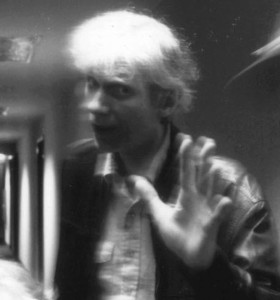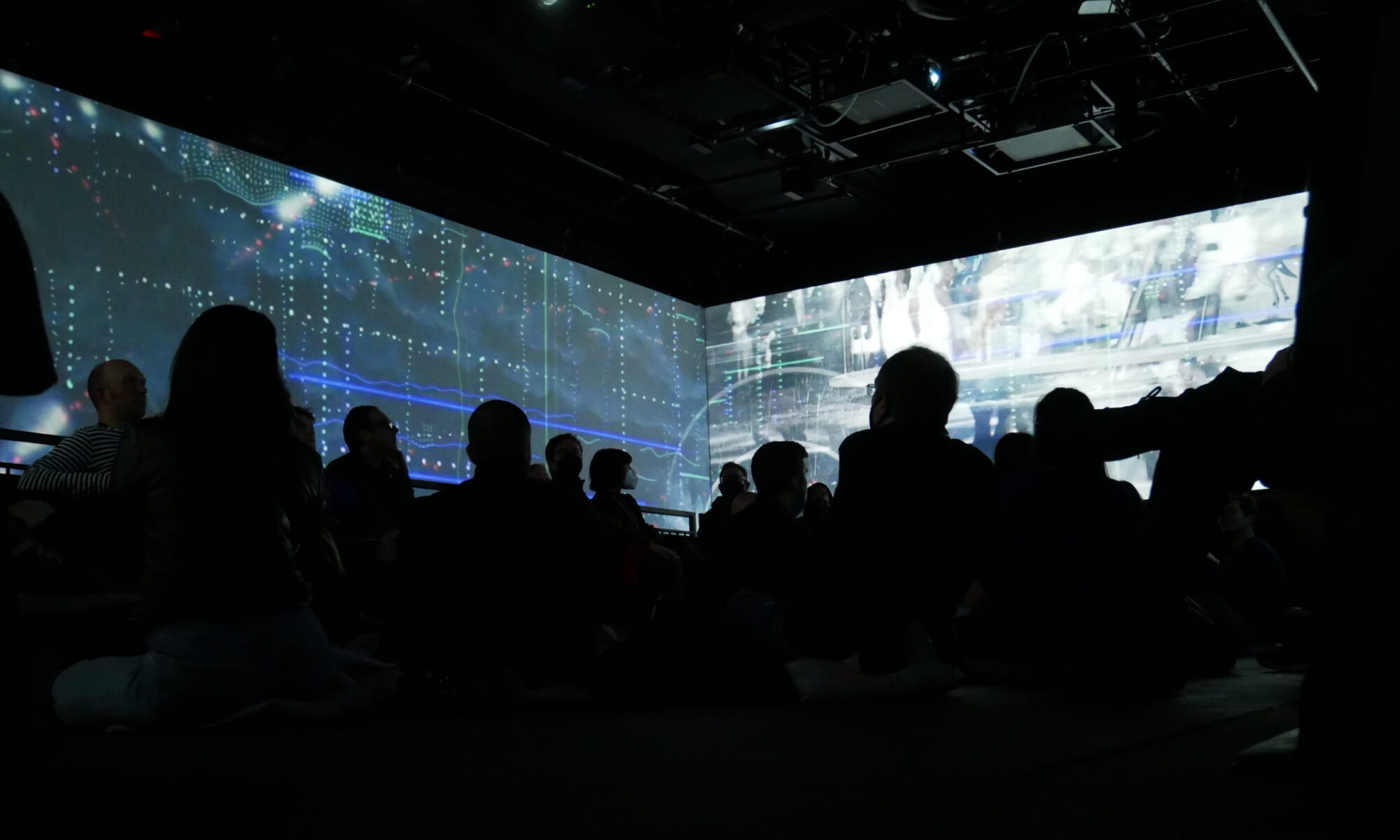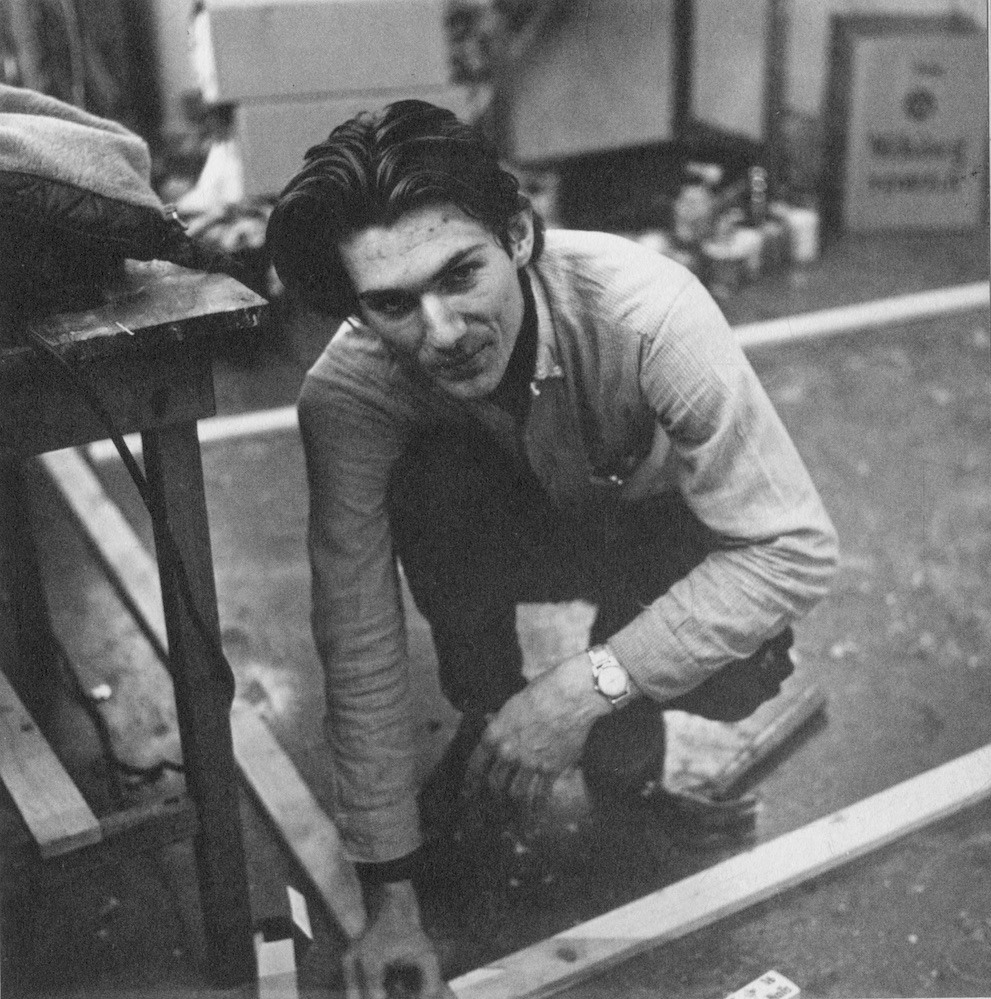
Don Joyce (Negativland, Over The Edge) has merged with the radio waves. Don was a close friend and amazing artist. His influence on the work of People Like Us is beyond measure. Here is a wonderful piece accurately conveying many of my own experiences, written by Jon Leidecker, who I also first met through Don.
Don Joyce lived in a second story flat off Telegraph Avenue in what is now the thoroughly gentrified Temescal district in Oakland, but when I visited the Negativland home studio for the first time in July of 1987, after nightfall you had to watch yourself on the way from your car to the front door. I was there to drop off source materials and discuss the theme for the coming week’s episode of Over The Edge, which, after two years of avid fandom, I had finally been invited to play. Don still had his programming day job at that point, and I discovered him in his room tinkering with the GUI for a primitive typing tutor program on his Mac SE with his left hand, while his right hand hovered near the pause button on a cassette deck recording KGO talk radio. Occasionally, while talking to me and coding with one hand, he’d unpause or repause the recording with the other, seemingly randomly. But I soon realized he was precisely waiting for silences between the host and his callers, and making sure host and callers still alternated in sequence. The resulting tape would still sound as if it were a conversation; it just wouldn’t be even remotely close to the one that had actually happened.
This approach to multi-tasking wouldn’t have been a surprise to anyone who’s heard Over The Edge, which I’d randomly channel surfed into at 12:30 in the morning two years before; at first I’d assumed I’d hit one of those magic nodes on the analog dial where two stations were coming in clearly at the same time, and paused to enjoy the accident. The slow rush of recognition came on over the next twenty seconds as I realized it was actually five to ten things at once: talk radio recordings and advertisements cut in with each other and twisted into dialogues, all while loosely played guitars and keyboards mingled with fragments of pop and soundtrack albums. And only when the sound of a disconnecting line terminated the guitar riff did I make that final connection: a number of the lower fidelity instruments and tapes were being contributed by live phone callers. I stayed up until the show ended at three, that night and many nights to come.
My nascent record collection had already skewed electronic by that point in my young life — the most interesting music, by definition, seemed to be something that could only be composed within in the confines of a studio. Live music seemed a pale shadow, far removed from where the action really was — what was live music even supposed to sound like at this point in history? A museum, or a card trick depended on canned backing tracks? The answer was suddenly obvious — you make music, live, out of pre-recordings, treating no one source as final, hearing any single moment of sound not as a fixed object but rather as the potential for another moment of live music. Every playback is already an act of live music, but the show made this obvious through the example of getting involved. This show was the moment when I stopped relating to music as the sum total of my record collection and I began relating to it as something that could be made in real time by people: Don, every week, sometimes joined by Negativland, Fake Stone Age, King’s House, Ronald Redball, Babs Bendix, People Like Us, and an endless cast of receptacle callers: Sasquatch, Mr. Oogie, Rocky, Phineas Narco, Metallurgy, Suicide Man.
I never got around to formally studying music; there was only playing on the show. All the instruction you need is right there in your studio headphones. The radio audience remains hypothetical, but you knew by definition the right people were listening; anyone else had the option of tuning out. Going back to the tapes, I know how exactly annoying I was as a teenager, but Don never assumed the role of a mentor, he just chimed in with what he knew. There’d usually be a smoke break around 1:45am with the occasional golden aside: “The trick is to keep coming up with new ways to make mistakes! It gets harder and harder to keep yourself confused enough to make anything worth listening to the next day.” Or: “Never confuse satisfaction with success! That first hour was way too much fun to be listenable.” Sure enough.
His life was pretty much his work. By the early 90s, the day job had been jettisoned, and the show became a full time job that nothing else could compete with. There was the occasional relationship with an amazing woman, but that was not going to be the path. Even food; I think he timed his grocery shopping to happen on the drive back from KPFA to minimize the number of hours away from his equipment. I’d play the show a certain number of times a year, and shared some wonderful concerts with him over the years; always surreal to spend time with the guy in a public setting. But most of my most personal memories of him are also strangely public; I’ve got them on cassette. And this is not the time to sum them up. The size of the archive is overwhelming, but any given 60 seconds shows you the practice, makes available an inspiration to anyone who needs one. It’s harder to describe the show now in the age of the internet; we can open twelve browsers at a time but we seldom use them to live our lives as a work of art in the way that he proved any one of us can.

I drove him to the emergency room when his breathing became a problem and we spent about three hours talking about future concerts and radio shows while they found him a room. So much left to do! He didn’t feel up to traveling with Negativland for tours, but he definitely wanted to play local shows, and he had ideas. And when I reminded him that he had collapsed, backstage, moments after we’d finished a concert we’d played together in 2012, overwhelmed… He admitted that if he was about to go, it’d been an amazing life that had gone much further than he’d ever imagined. He started out a painter, and then out of nowhere, this whole music thing — it’d really turned out! He also wanted me to know: he wouldn’t take back a single cigarette. Every one delicious. So much pleasure.
In other words, no regrets. Such a relief for anyone who sometimes feels at odds with the idea of getting subsumed by the art, or missing the traditional signposts of a normal life. Take it to any degree you feel comfortable with, as you visit to the archives, or make your own weird new combines, or encounter any of the other odd people who might have been listening in isolation, but whom this show strangely brought together in real life. The recordings are one thing, and it’s good that they’re there, but what are you going to do with them on any given week? Might as well be something; it’ll be the right move.
The work you started is not ending anytime soon, Mr. Edge. Thank you for the inspiration. — Jon Leidecker – 30 July 2015
Here are some notable recent shows for/paying tribute to Don:
DO or DIY with People Like Us, “Don Joyce“, 17 July 2015
Over The Edge on KPFA, “Breathing” 16 July 2015
Over The Edge on KPFA, “There Is No Don“, 23 July 2015
DO or DIY with People Like Us, “Universe – Part 92 – yes, it’s another show for Don Joyce“. 31 July 2015
In constant memory of Don Joyce. https://archive.org/details/ote

